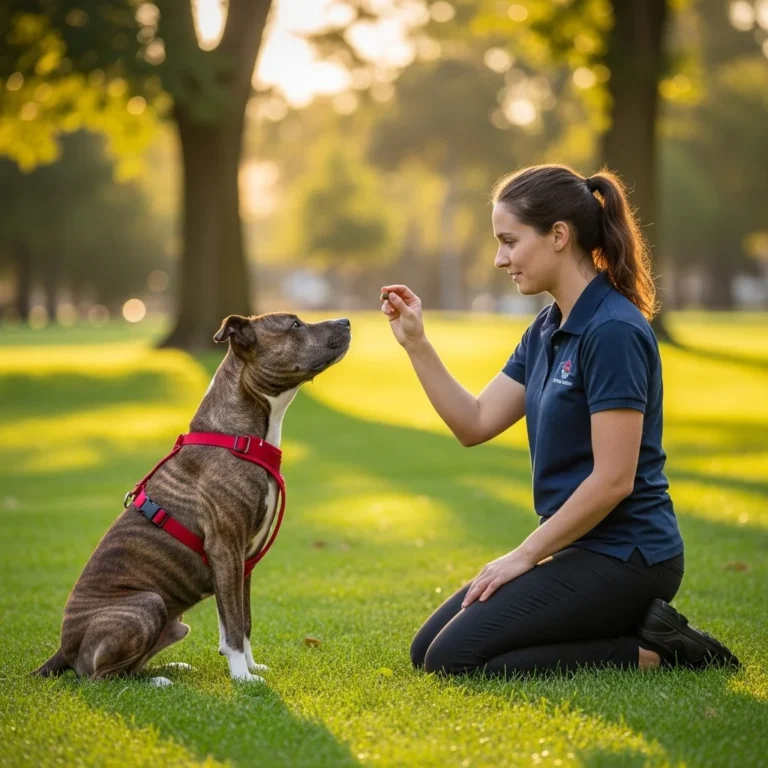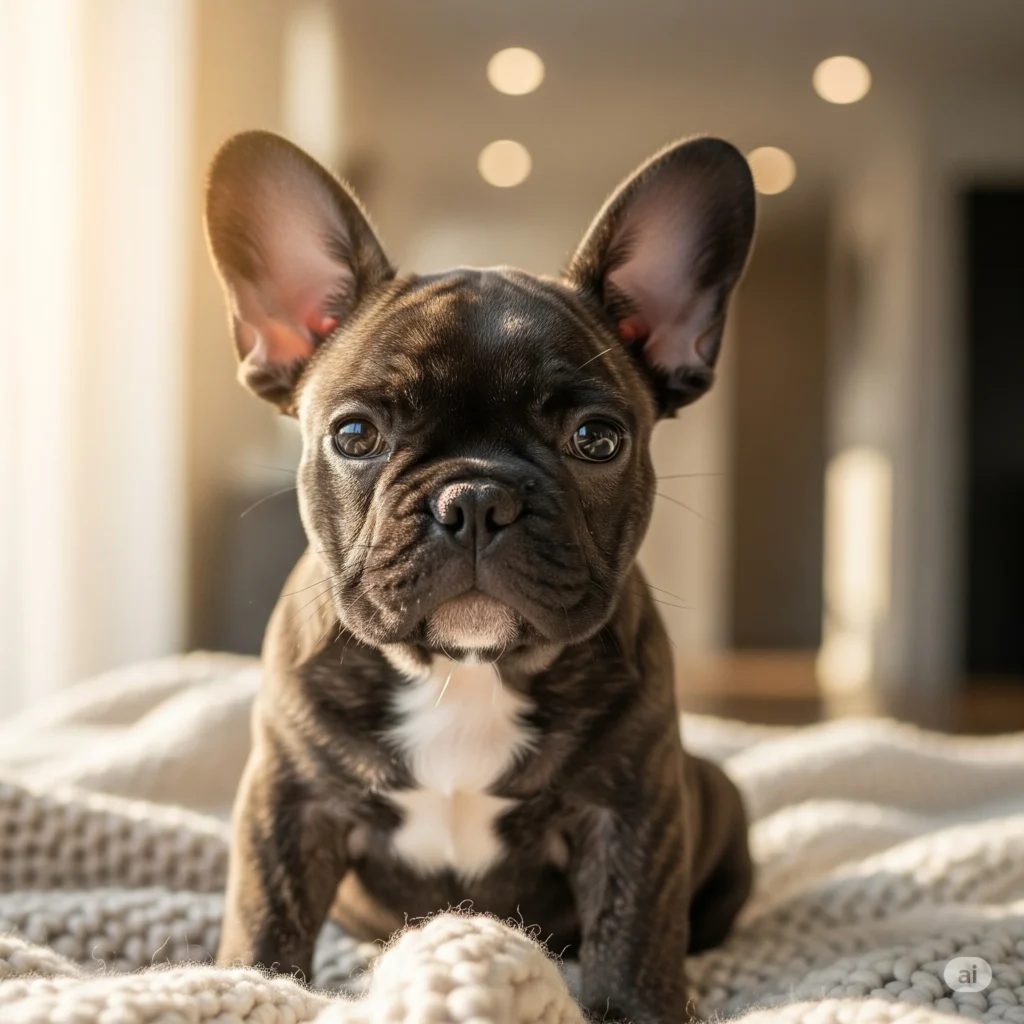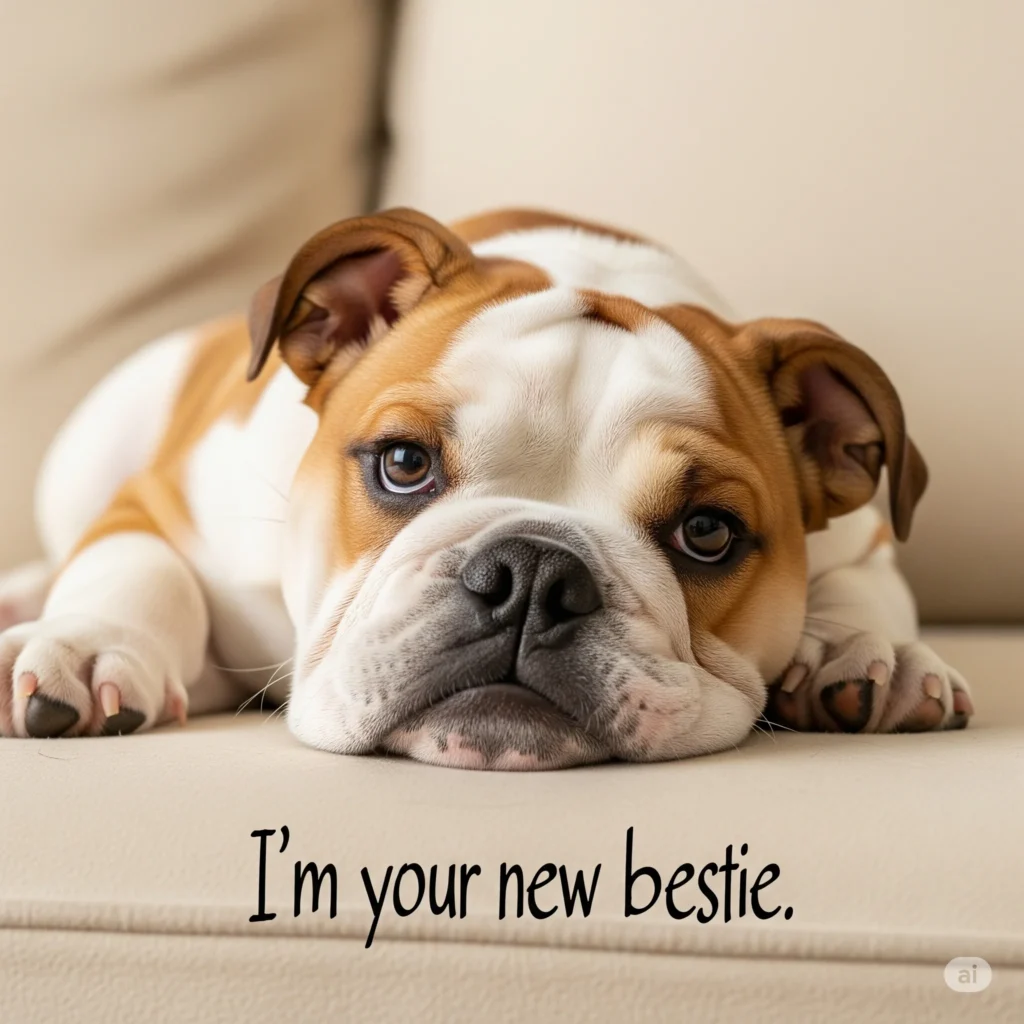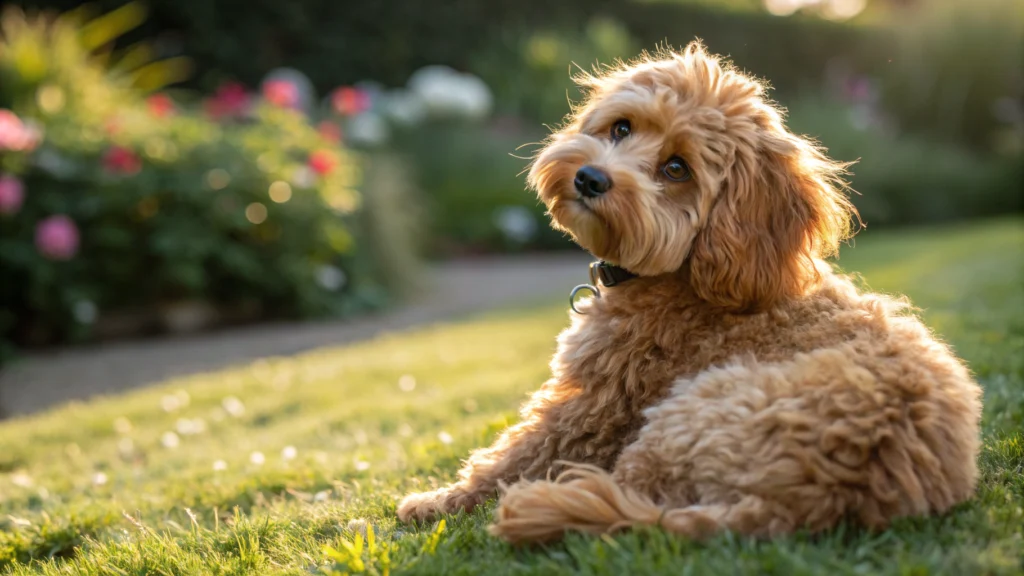
brindle pitbull
You’ve probably seen one before — a dog with gorgeous, tiger-like stripes that make you look twice. Yep, that’s a brindle Pitbull. These pups rock one of the coolest coat patterns in the dog world, and they’ve got just as much personality to match those striking looks. But there’s way more to them than fancy fur.
In this guide, we’re diving into everything that makes pitbull breeds brindle so special — from their genetics and health to their goofy personalities and the best ways to keep them happy. Whether you’re thinking about adopting one, already have one curled up on your couch, or are just a curious dog lover, you’ll find some fun facts (and maybe a few surprises) along the way.
Appearance & Genetics
What is a brindle coat on a Pit Bull?
So, what’s up with those stripes? A brindle coat basically means your dog’s fur has dark streaks (usually brown or black) running over a lighter color like tan or red. It’s sometimes called the “tiger stripe” look, and honestly, it’s stunning.
The exact look depends on their genes — some brindles have soft, faint lines, while others look like they’re wearing designer stripes. (source)
According to doggenetics.co.uk, those stripes come from two pigments — eumelanin (dark) and phaeomelanin (light). It’s like nature’s own paintbrush doing its thing.
How do brindle and reverse-brindle differ?
Reverse-brindle sounds fancy, but it’s really just a flip in color balance. Regular brindles have lighter fur with dark stripes, while reverse-brindles look darker overall — almost like the stripes took over the whole outfit.
Think of it this way: if regular brindle is a tan jacket with black pinstripes, reverse-brindle is a black jacket with tan pinstripes. Either way, both are show-stoppers. (source)
Which color variations (blue, red, fawn, etc.) can appear in brindle Pit Bulls?
Brindle doesn’t stick to just one look. You’ll find:
- Red or fawn brindles — warm, sun-kissed tones with brown stripes.
- Blue brindles (blue brindle pitbull)— sleek grayish coats with muted striping.
- Reverse blue brindles — basically a moody, dark version of the above.
Each combo has its charm, and honestly, it’s tough to pick a favorite. (source)
How is brindle inherited — can non-brindle parents produce brindle pups?
Yep, it’s possible! According to doggenetics.co.uk, the brindle pattern is linked to something called the K-locus gene. Two dogs can look totally solid-colored yet both secretly carry the brindle gene — meaning they could surprise you with striped puppies.
It’s like finding out both parents are closet artists and suddenly the kid’s painting masterpieces. Genetics is wild.
Temperament & Behavior
Does a brindle Pit Bull’s coat color affect temperament?
Nope, those stripes don’t change personality — no matter how fierce they look. Experts at petplace.com say Pitbulls are naturally affectionate and people-oriented. They’re lovers, not fighters, despite what some stereotypes might suggest.
So, if someone tells you “brindle dogs are mean,” just roll your eyes and walk away. It’s how they’re raised and trained that matters.
Are brindle Pit Bulls good with children and families?
Absolutely — when they’re socialized right. Most brindle Pitbulls are goofy, loyal, and surprisingly gentle with kids. They’ll run, play, and nap beside your toddler like a big, snoring guardian angel. (source)
Just remember: kids and dogs should always be supervised, no matter how chill your pup is. Respect goes both ways — gentle kids make for gentle dogs.
What common behavior traits should owners expect?
Here’s the rundown:
- Energy for days. These dogs don’t do “lazy.” They need walks, playtime, and something to keep their brains busy. (source)
- Velcro vibes. Pitbulls love people. Expect them to follow you from room to room like a striped shadow.
- Smart but stubborn. They’re quick learners, but only if you make it fun and fair.
Give them love, structure, and a job to do, and they’ll be the best sidekick you’ve ever had.
Health & Lifespan
Does the brindle color cause specific health problems?
Good news — those stripes aren’t hiding any secret health issues. The brindle pattern itself doesn’t make them sick. What really matters is genetics and breeding quality. (source)
That said, steer clear of breeders obsessed with producing “rare” colors over healthy pups. Pretty coats don’t mean much if the dog’s health is compromised.
What health issues are Pit Bulls (including brindles) prone to?
Like all Pitbulls, brindle ones can be prone to a few common issues:
- Hip dysplasia — joint problems that make movement painful. (source)
- Skin allergies — their sensitive skin reacts to food or environmental stuff. (source)
- Thyroid and heart issues — sometimes crop up in certain lines. (source)
Nothing here’s guaranteed — just things to keep an eye on. A good vet, balanced diet, and regular checkups go a long way.
What is the typical lifespan of a brindle Pit Bull?
Most brindle Pitbulls live 12 to 14 years, sometimes longer if well cared for. (source)
Keep them active, lean, and loved — they’ll likely be around for many birthdays and tail wags.
Care, Grooming & Exercise
How much do brindle Pit Bulls shed and how should I groom them?
Thankfully, grooming’s pretty simple. Their short coats shed a little but not like crazy. Brush them twice a week, and they’ll stay sleek and shiny. Over-bathing? Big no. It can dry out their skin. Stick to mild shampoos. (source)
Also, don’t forget nails, ears, and teeth. A quick once-over every week keeps things fresh — no funky dog smell included.
What exercise and mental enrichment do they need?
These pups are athletes. They need at least an hour of good exercise daily — walks, fetch, hikes, or even agility training if you’re up for it. (source)
Tired Pitbull = happy Pitbull. Bored Pitbull = chewed-up shoes. You pick.
Mental games are huge too — puzzle feeders, hide-and-seek, obedience tricks. Keep that brain ticking. (source)
Any coat-care tips for skin, allergies, or sun sensitivity?
Yup! Their skin can be a little diva-ish.
- Watch for itching or red spots — could mean allergies. (source)
- Use dog-safe sunscreen on lighter patches when out in the sun.
- Add fish oil or Omega-3s to their diet (vet-approved, of course) for that glossy coat.
Training & Socialization
What training methods work best for Pit Bulls?
Positive vibes only, please. Brindle Pitbulls respond best to praise, treats, and fun training sessions. Harsh discipline doesn’t work — it just makes them nervous or stubborn. (source)
Keep sessions short, upbeat, and end on a high note. You’ll be amazed how fast they pick things up.
When and how should I start socializing a brindle Pit Bull?
Start young! Puppyhood’s(brindle pitbull puppy) the golden window for socialization. Introduce your brindle baby to different people, dogs, sounds, and places. It builds confidence and helps prevent reactivity later. (source)
If you’ve got an older rescue, go slow — patience works wonders.
Which training mistakes should I avoid?
Some common blunders:
- Skipping socialization.
- Punishing instead of redirecting.
- Forgetting that they need exercise and mental stimulation.
Remember — you’re not raising a guard dog; you’re raising a best friend with stripes.
Adoption, Buying & Breeding
Are brindle Pit Bull puppies rarer or pricier?
They can be a little pricier just because that coat turns heads. But they’re not unicorn-rare. The key is focusing on ethical breeders, not flashy ads. (source)
How can I find a responsible breeder or rescue for a brindle Pit Bull?
Do your homework:
- Ask for health test results.
- Meet the parents if possible.
- Visit the facility — it should be clean and transparent.
- Check rescues! Tons of brindle Pitties need loving homes.
And don’t be afraid to ask awkward questions — a good breeder or rescue will respect that.
What health tests and paperwork should I request?
You’ll want:
- Vet records, vaccinations, and deworming proof.
- Hip/elbow scores.
- Eye and thyroid test results.
- A written health guarantee if available. (source)
Paperwork might not sound exciting, but it’s your pup’s safety net.
Myths & Legal Questions
Does brindle mean the dog is a pure Pit Bull or mixed breed?
Nope, not at all. Brindle is just a color pattern, not a breed marker. Lots of breeds can be brindle — Boxers, Greyhounds, Mastiffs, you name it. (source)
So, don’t judge a dog’s “purity” by its stripes.
Could a brindle Pit Bull be treated differently under local laws or bans?
Unfortunately, yeah — sometimes. Some areas have breed-specific laws that target “Pitbull-type” dogs. These laws usually judge by looks, not behavior. So even your sweet, stripey cuddlebug could face restrictions.
Know your local rules, keep your dog’s paperwork handy, and always show off your dog’s good manners.
What common myths about brindle Pit Bulls should I ignore?
Let’s bust a few:
- “Brindle dogs are aggressive.” Nope. That’s a myth.
- “Brindle = rare = better.” Pretty? Sure. Better? Nah — personality matters more.
- “They’re dangerous.” Also false. Brindle Pitbulls can be gentle goofballs with the right care.
- “They don’t get skin issues.” Oh, they do. Keep that coat clean and moisturized.
Conclusion
At the end of the day, a brindle pitbull dog is more than a cool coat — it’s a loyal, loving companion wrapped in stripes. They’ll make you laugh, keep you active, and melt your heart daily.
If you’re thinking about getting one, do your homework, choose love over looks, and be ready for a lifetime of tail wags and slobbery kisses. Because trust me, once you’ve shared a home with a brindle Pitbull, no other dog quite compares.
please leave comment
you may like it






